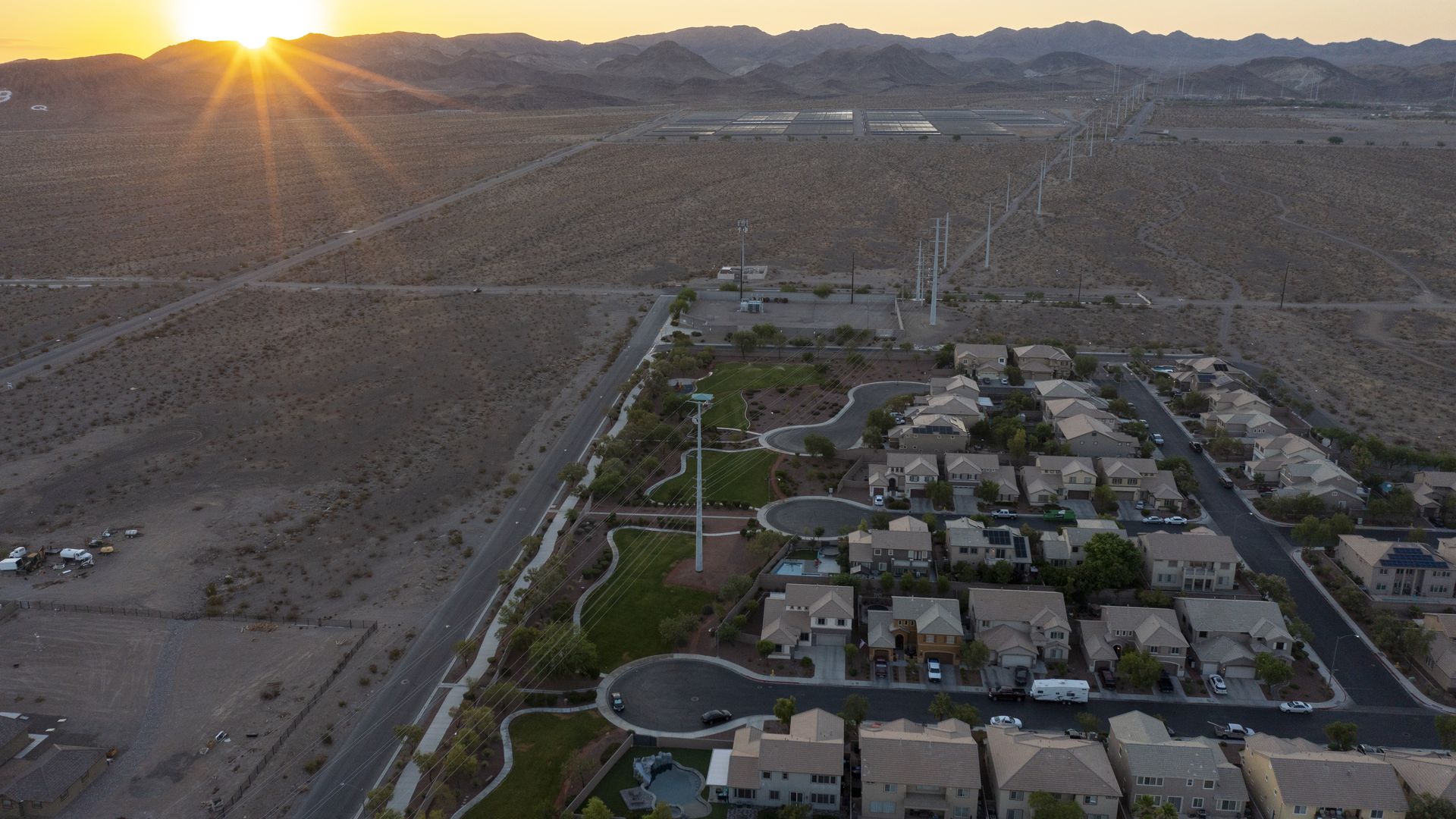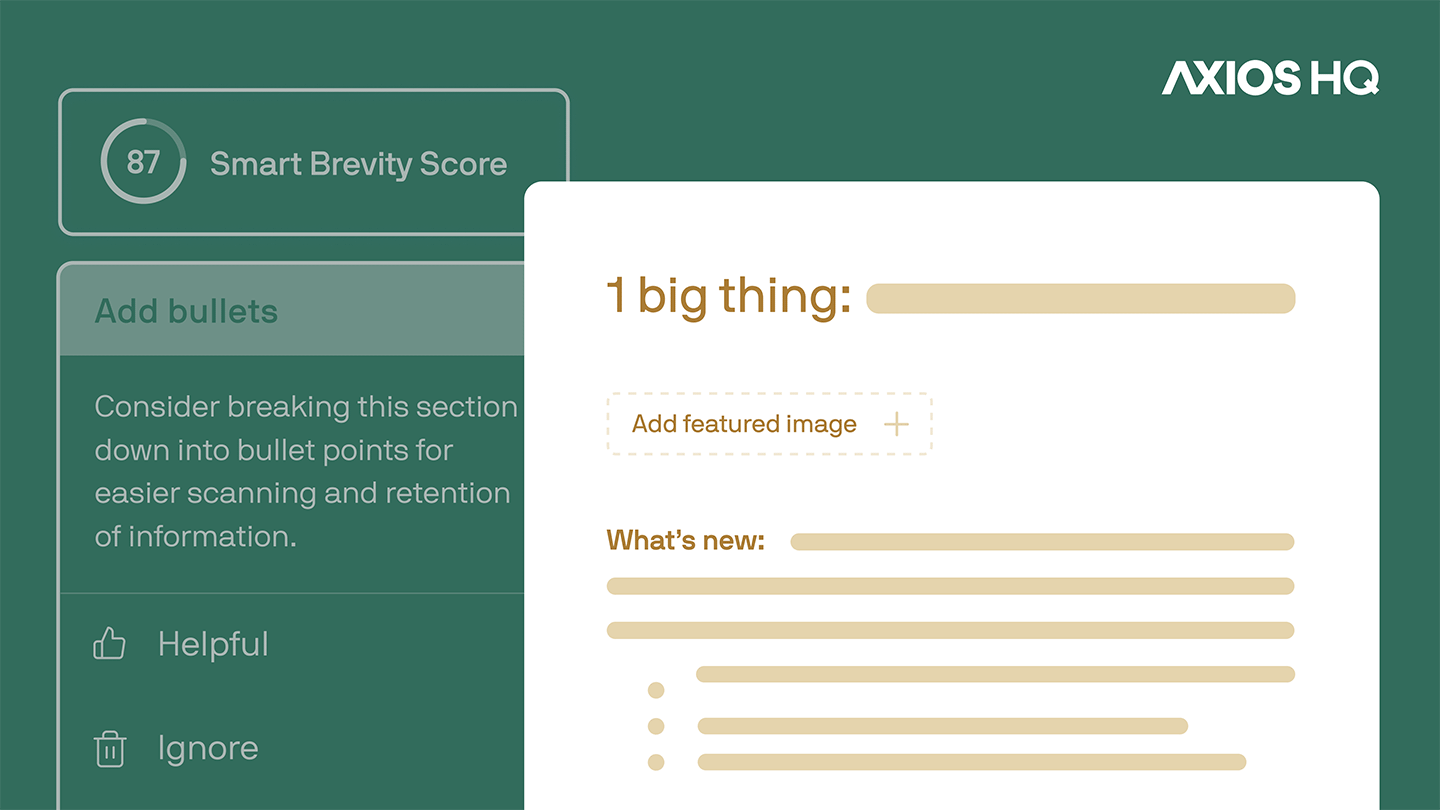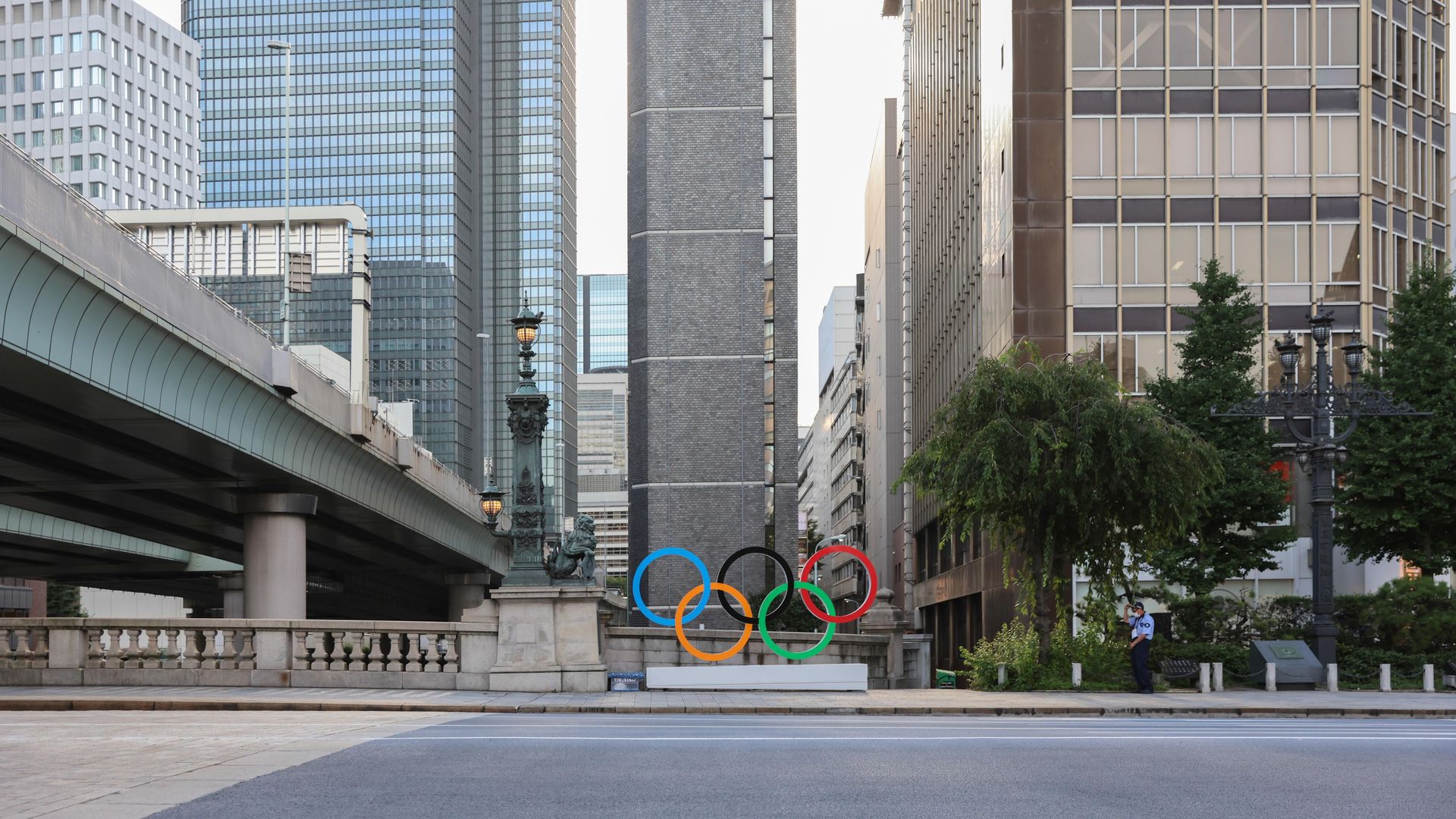| | | | | | | | | | | Axios What's Next | | By Bryan Walsh, Erica Pandey and Joann Muller ·Jul 29, 2021 | | Thursday brings you the rapid testing response to the Delta surge, remote workers who do it from bed, and the return of an Edo landmark in Tokyo. "What was next" trivia: On this day in 1966, John Lennon was quoted saying the Beatles were more popular than who? 🎸 - Credit to reader Joe Brooks for being the first to note that war rations for coffee were lifted on July 28, 1943. ☕️
- Send your answer, along with tips and feedback, to whatsnext@axios.com.
Today's Smart Brevity count: 1,384 words ... 5 minutes. | | | | | | 1 big thing: Testing our way around the Delta surge |  | | | Illustration: Aïda Amer/Axios | | | | A recent surge of COVID-19 cases — and growing numbers of still rare breakthrough infections among vaccinated people — is strengthening the case for more frequent testing and surveillance, Bryan Walsh writes. Why it matters: The more contagious Delta variant threatens the fuller reopening of offices and schools in the fall. But regular testing — especially with inexpensive rapid COVID-19 tests that provide results near instantaneously — could help catch breakthrough cases and provide an additional measure of security for the worried. Driving the news: On Thursday President Biden will reportedly announce that all civilian federal employees will need to be vaccinated, or submit to regular COVID-19 testing and adhere to social distancing requirements. - In New York, Citigroup is requiring unvaccinated employees to use an at-home rapid test three times a week, and wear masks in the office, while Goldman Sachs has begun regular testing for unvaccinated workers.
- In Delaware, health and education officials are working with the diagnostic company Quidel to bring rapid testing to the state's 350 schools for unvaccinated staff and students, which would include everyone below the age of 12.
By the numbers: From a peak of more than 2.3 million COVID-19 tests a day in early January 2021, daily testing fell to fewer than 900,000 a day by mid-July. - But testing numbers have risen somewhat in recent days, with pharmacies in high-spread states like Florida reporting a sharper increase.
- "The past 10 days have been going off the hook," says Barry Abraham, the president and COO of Empowered Diagnostics, a south Florida-based company that provides COVID-19 testing for companies. "The testing centers are going back to December numbers."
What they're saying: "The most important aspect of these tests is the rapid result," Michael Mina, an epidemiologist at the Harvard T.H. Chan School of Public Health, told the New York Times last month. "Waiting two to three days for laboratory test results isn't ideal when you need results quickly to make decisions about going to school, work or a social gathering." Be smart: Far and away the most effective way to reduce spread is to increase vaccine coverage. Even with breakthroughs, the Delta surge is primarily a "pandemic of the unvaccinated," as CDC head Rochelle Walensky said last week. - But with school and office reopenings potentially on the line, both policymakers and executives should keep in mind they're fighting a two-front war: encouraging the unvaxxed to get a shot, but also reassuring the vaccinated that a full return to public life is safe.
- Testing is one way to achieve the latter.
Read the rest |     | | | | | | 2. A 1-in-3 chance your remote employee is working from bed |  | | | British actor Michael Caine. Photo: Larry Ellis/Express/Getty Images | | | | Forget the home office — 45% of American teleworkers regularly work from a couch, 38% regularly work from bed and 20% often work outside, according to a study by the home improvement marketing firm CraftJack, Erica Pandey writes. Why it matters: Home offices are a luxury. - While some workers have been able to spend hundreds — or even thousands — of dollars setting up work stations in their homes, others have struggled through the pandemic.
- Many remote workers, especially those living in cities, have been working in shared spaces with roommates or family members and working without desks.
- While a thriving sector for outfitting remote workers has sprung up, and tech companies like Dropbox are offering lavish WFH stipends, most employees aren't so lucky.
By the numbers: People have spent an average of $268 trying to improve their remote work setups, but a whopping 50% still say the pain and discomfort of working from home is enough to send them back to the office. The bottom line: It's not enough for companies to provide stipends for teleworkers to buy ergonomic chairs or desks, Axios' Kia Kokalitcheva notes. Many people simply do not have the space allocated inside their homes for an office setup, and it can be too expensive to move to a bigger place. Methodology: CraftJack surveyed 1,520 Americans who worked entirely or primarily from home between June 16 – 25, 2021. Share the story |     | | | | | | 3. Americans have been moving to where the water isn't |  | | | Urban sprawl in Henderson, Nev., outside of Las Vegas. Photo: David McNew/Getty Image | | | | Even as population growth in the U.S. as a whole slows down, numbers are still rising in the Southwest and Mountain West, Bryan writes. - One problem: many of these communities are among the most drought-prone in the country, and are likely to get even drier.
By the numbers: In a post this week for the Economic Innovation Group, Daniel Newman calculated that the driest group of communities in the Southwest averaged a total of 245 weeks in severe drought between January 2010 and July 2021. - Over the same period, those places added an additional nearly 7.4 million people, increasing the population by 10% to more than 81.4 million people.
- Counties mostly in the Northeast and the Midwest that spent less than a year cumulatively in severe drought over the past decade grew by only 5.7 million residents.
What's next: Population projections by NASA's Socioeconomic Data and Applications Center estimate that the U.S. population will grow by nearly 54 million through 2040, of which nearly half will be in counties that have spent more than three years in severe drought over the past decade. The bottom line: In the age of air conditioning and irrigation, deserts haven't been an impediment to growth — simply gaze upon Phoenix, a city of more than 1.7 million that averages a little over 9 inches of rainfall each year. - But moving more and more people into regions that are bone dry and getting drier isn't exactly good climate change adaptation.
Share this story |     | | | | | | A message from Axios | | Deliver your company-wide updates the way we deliver the news | | |  | | | | AxiosHQ, our communications software, uses machine learning to distill essential updates to their core. What lands in your team's inbox is a distinct, Axios-style email — with all the news they need to stay productive. Readers are 2x more likely to open an Axios HQ email than other internal updates. See a sample Axios HQ newsletter. | | | | | | 4. Why Mark Zuckerberg is going meta |  | | | Photo illustration: Aïda Amer/Axios. Photo: Michaela Handrek-Rehle/Bloomberg via Getty Images | | | | Facebook's "next chapter," Mark Zuckerberg says, is to be the prime builder of "the metaverse" — an open, broadly distributed, 3D dimension online where, he says, we will all conduct much of our work and personal lives, Scott Rosenberg writes. The big picture: Zuckerberg admits Facebook will only be one of many companies building this next-generation model of today's internet — but he also intends for Facebook to lead the pack. Driving the news: Facebook Monday announced it was creating a metaverse product unit. That came on the heels of a companywide speech on the topic by Zuckerberg at the end of June. Why it matters: The moves make clear that he sees this effort not as a long-term research undertaking or a moonshot-style roll of the dice, but as something his armies of engineers can start building now. The vision, as Zuckerberg described in an interview with Casey Newton in The Verge, is of virtually "teleporting" via a headset or AR glasses. - "You can think about the metaverse as an embodied internet, where instead of just viewing content — you are in it. And you feel present with other people as if you were in other places, having different experiences that you couldn't necessarily do on a 2D app or webpage, like dancing, for example, or different types of fitness."
Read the rest |     | | | | | | 5. 1 urban renewal thing: Freeing Tokyo's Nihonbashi Bridge |  | | | Tokyo's famed Nihonbashi Bridge, which has been covered up by an expressway since the last Tokyo Olympics. Photo: Stanislav Kogiku/SOPA Images/LightRocket via Getty Images | | | | Tokyo is working to remove and bury a highway overpass that blights the Japanese capital's famous Nihonbashi Bridge, Bryan writes. Why it matters: The bridge is a rare remaining historic site in a megacity that has been razed and rebuilt multiple times. Restoring it to its pre-modern glory is a sign of urban renewal and fits with a broader trend of cities rethinking ugly highway overpasses. What's happening: Shortly before the Olympics began, Tokyo started work on a long-planned project, which will see a little more than a mile of the city's Metropolitan Expressway buried underground, giving Nihonbashi Bridge an open view. - The expressway was built just before the 1964 Tokyo Olympics and was a symbol of a city that was obsessively focused on growth in the postwar years.
- But Tokyo — like other cities around the world that bulldozed historic sites and neighborhoods to build expressways — is putting a new emphasis on livability.
Background: If you've ever seen the famous Edo-era ink paintings of Katsushika Hokusai, you've seen the Nihonbashi Bridge in all its pre-highway glory. - The bridge can claim to be the origin of Japan's roadways — it was the starting and endpoint for the road between Tokyo (known as Edo before the Meiji Restoration in 1868) and the old imperial capital of Kyoto.
What to watch for: The sky above Nihonbashi — though not until the project is fully completed in 2040. |     | | | | | | A message from Axios | | Deliver your company-wide updates the way we deliver the news | | |  | | | | AxiosHQ, our communications software, uses machine learning to distill essential updates to their core. What lands in your team's inbox is a distinct, Axios-style email — with all the news they need to stay productive. Readers are 2x more likely to open an Axios HQ email than other internal updates. See a sample Axios HQ newsletter. | | | | Thanks for reading! If this email was forwarded to you, subscribe here! |  | | It'll help you deliver employee communications more effectively. | | | | | | Axios thanks our partners for supporting our newsletters. If you're interested in advertising, learn more here.
Sponsorship has no influence on editorial content. Axios, 3100 Clarendon Blvd, Suite 1300, Arlington VA 22201 | | | You received this email because you signed up for newsletters from Axios.
Change your preferences or unsubscribe here. | | | Was this email forwarded to you?
Sign up now to get Axios in your inbox. | | | | Follow Axios on social media:    | | | | | |










No comments:
Post a Comment